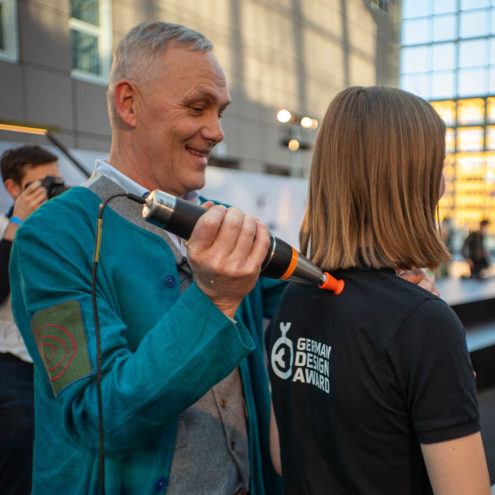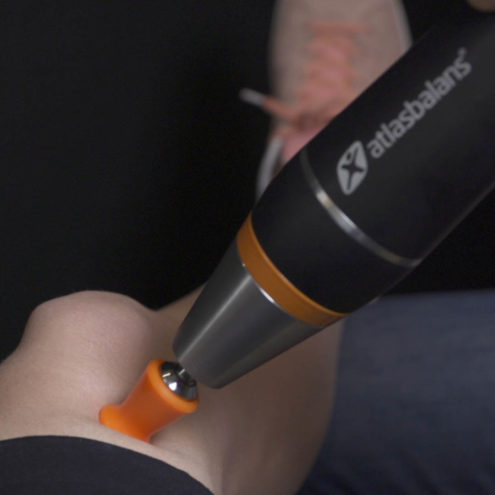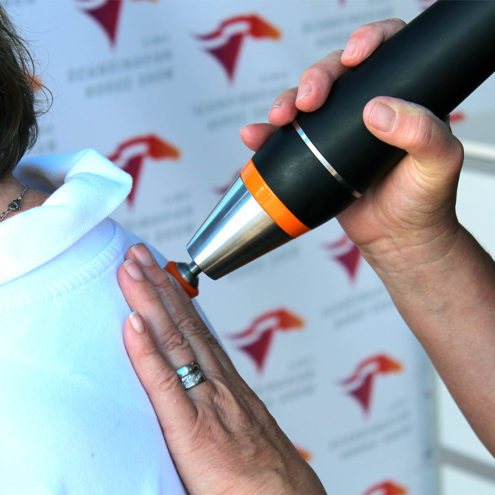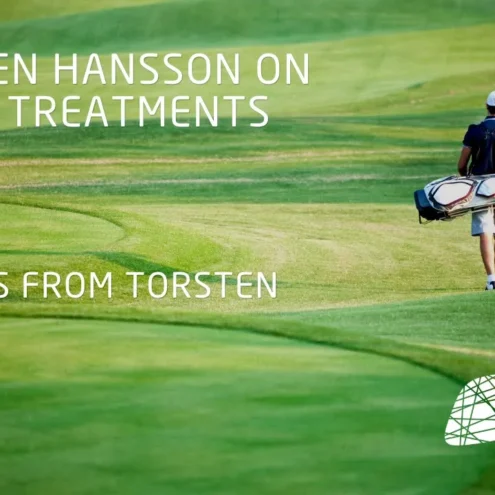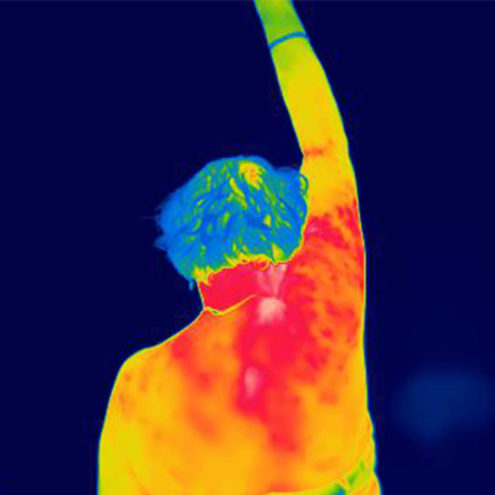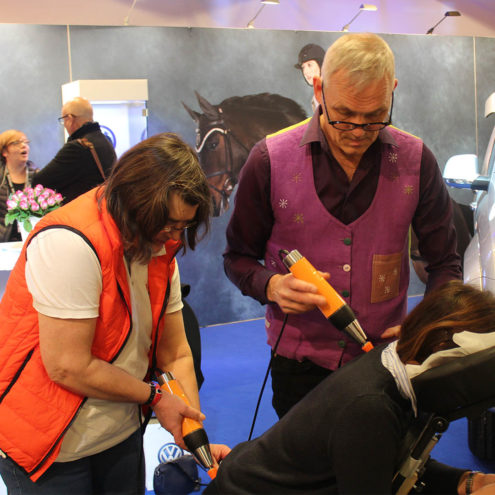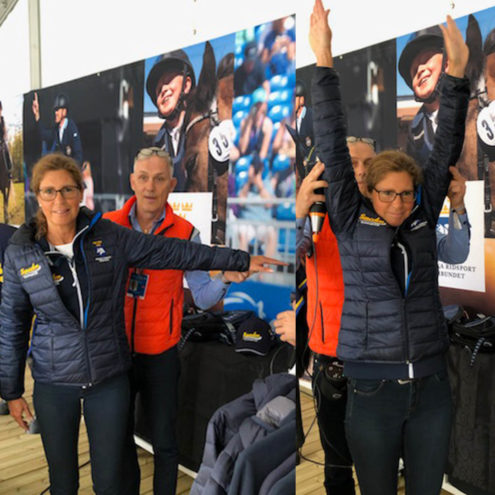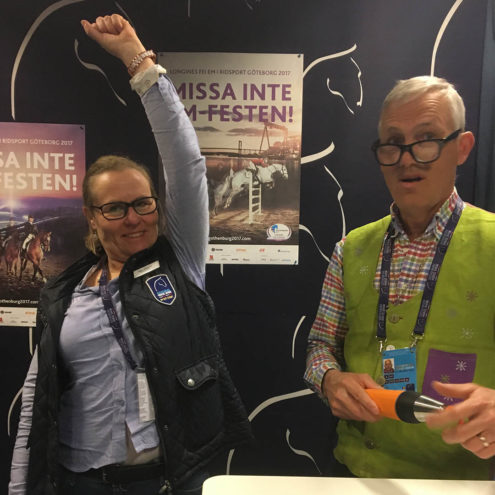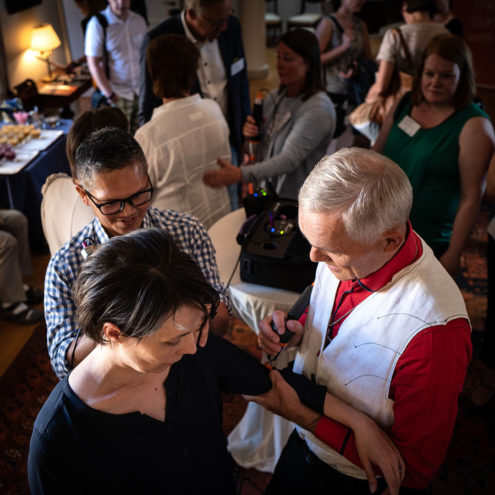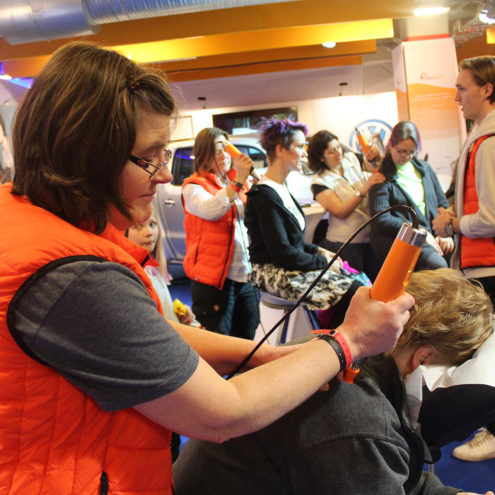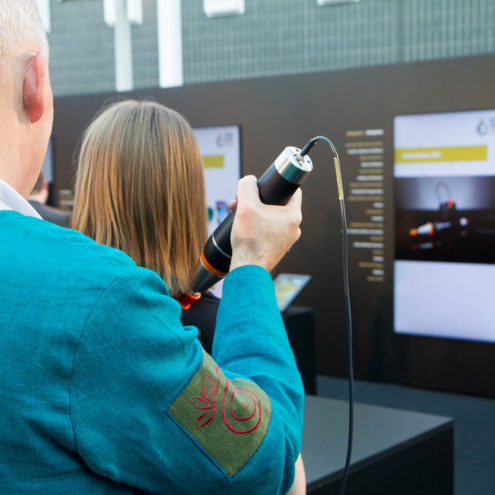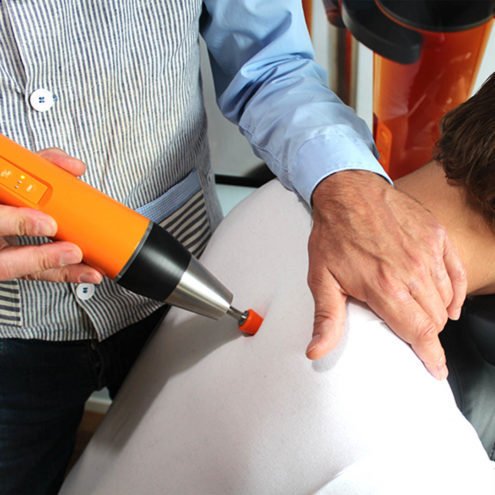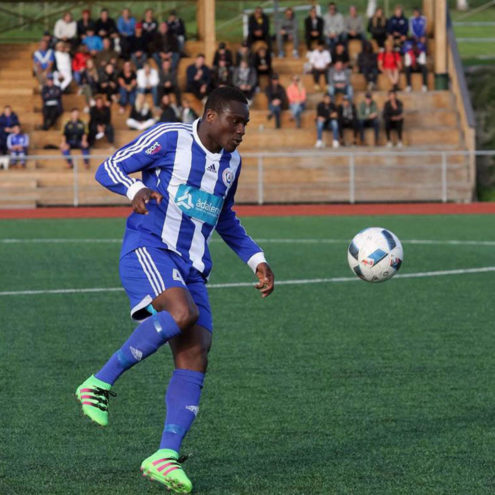Common football injuries – Prevention and Treatment

Football is a sport that everyone in the world knows. This sport includes several different movement patterns that all players perform during each match. If these movements are performed several times a day, over a long period of time, the biological structures involved (joints, ligaments, nervous tissue and myofascia) will change to adapt to the loads and pressures to which they are subjected. These adaptations allow the quality of the specific movements to be maximized, leading to the improvement of the individual’s performance in sport. However, these adaptations are often the cause of changes in muscle tension patterns within the sport, and in some circumstances can lead to abnormal or excessive loading of the structures involved. Common injuries in football are often muscle and ligament tears of the lower limbs, such as injuries to the anterior cruciate ligament of the knee joint and ruptures of the hamstring muscles. Plantar fasciitis and foot deformities are also common in football.
In order to prevent and rehabilitate football injuries, it is important to understand how the body and fascia mechanically adapt and rebuild to meet the physical demands of the sport. It is also important to introduce early methods of training and recovery that allow the fascia network to be rebuilt and strengthened multidimensionally.
Common types of football injuries
In football, injuries often affect the lower limbs, but the upper body can also be at risk of injury, although it is not as common. Some examples are:
Knee injuries– In football, knees are often prone to injury. Structures such as the anterior cruciate ligament (ACL) and internal meniscus, along with the internal collateral ligament, are the most commonly injured in football.
Ankle injuries and sprains – Rapid turning associated with impaired proprioception of the plantar fascia can lead to injury.
Muscle ruptures in hamstrings or calves – Muscle ruptures in soccer often affect the hamstrings and calves, but other muscles on the leg are also prone to injury. Ruptures can be partial or total.
Groin problems – Usually occurs on the dominant leg kicking the ball, the injury is usually in the stretching phase of kicking the ball.
Deformation of the foot and reduced function – Due to the unique design of football boots, it has been observed that after a period of playing football, the shape of players’ feet changes. Localized problems such as hallux valgus, hallux rigidus, quintus varus and corns are common in footballers. Deformity leads to a deterioration in the function of the foot and has been seen to negatively affect the ankle and knee joints.
Knee injuries (ACL and meniscus injuries)
The anterior cruciate ligament (ACL) of the knee joint is the most commonly injured ligament, especially in women. The typical course of an ACL injury is that a hyperextended (fully extended) knee, with the foot fixed to the ground, is subjected to sudden lateral force. The force causes the knee joint to rotate inwards, taking it outside its normal range of motion. Due to the design of the joint surfaces, inward rotation of the knee can normally only occur in a flexed position. In an extended knee, the femur is locked to the tibia. Impaired ankle dorsiflexion also prevents the knees from bending sufficiently, which means that a large part of the force cannot be distributed in the body, but is absorbed by the knee joints. The mechanism of injury of menisci is usually very similar to that of an ACL injury where a violent twisting of the knee joint occurs. Most often it is the inner meniscus that is injured as it has a smaller range of motion than the outer one.
Symptoms of ACL and meniscus injuries
Sudden pain and swelling in the knee at the time of injury.
Any audible snapping or twisting sensation in the knee.
Difficulty stretching the knee.
Sharp pain when squatting or twisting the knee.
Pain in the knee joint with mechanical symptoms such as locking and popping.
It hurts when you touch the area where the injury is.
Feeling of weakness and the knee “buckling and giving way” under load.
Ankle injuries and sprains
Ankle injuries and sprains in football can happen in several different ways. They can be caused by stepping wrongly, by sudden twisting of the ankle or by collision with another player. Sprains involve the ankle being stretched for a short period of time beyond its normal range of motion without the head of the joint moving out of the socket.
The importance of improving the proprioceptive stimulation of the plantar fascia has recently been highlighted. The plantar fascia contains a large proportion of proprioceptors, especially on its outer and inner parts where it joins the fascia from several toe-controlling muscles and from muscles in the sole of the foot. Research has shown that today’s football boots are designed in a way that creates insufficient sensory feedback to the central nervous system. This leads to poor balance control and is correlated with a high risk of ankle injuries and sprains.
Common symptoms of ankle injuries and sprains
Pain, swelling and stiffness of the ankle
Heat increase in the damaged area
Difficulties in putting weight on the foot
Bruising at the site of injury
Muscle ruptures in thighs and calves
In the case of a muscle rupture, it is often the connection between muscle and tendon, known as the myotendinous junction, that is affected. These areas play a key role by being the structure where the muscle fibers and their endomysium interact with the tendon. This area is the most fragile part of a muscle as the collagen there is not very resistant. In football, rupture of a muscle in the hamstrings is most common, but injuries to the adductors and quadriceps also occur. A common cause of hamstring injury during soccer is through sudden changes in speed. Another reason for hamstring injuries is heavy braking that requires eccentric contraction. The tissue needs to counteract high forces that stretch in the presence of active muscle work.
Increased stiffness in the fascia of the calf muscle is often the root cause of Achilles tendon injuries. The Achilles tendon is directly linked with the deep fascia around and within our muscles at the macro and micro level. Injuries such as ruptures or tendonitis often occur during fast, explosive movements – such as when a player sprints to get away from an opponent or chases after the ball.
Symptoms of muscle damage in the hamstrings and calves
At the time of injury, you may experience a “popping” sensation in the muscle. A snapping sound may also be experienced
Severe pain at the junction of the muscle and tendon.
Redness and swelling
Muscle weakness
Impaired mobility of the muscle
Bruising in the injured area
Groin injuries
Groin injuries most often occur on the dominant leg kicking the ball. On the kicking leg, the quadriceps and hip flexors dominate, causing the pelvis to first tilt backwards and push in towards the midline of the body. This allows the pelvis of the supporting leg to rotate forward and shift sideways to allow the body to stand upright. The uneven range of motion combined with the forward rotation of the pelvis creates an extended shoulder on the supporting leg. The new tension pattern in the pelvis leads to stiffening of certain muscles and ligaments on the kicker. In particular, the hip flexors, adductors and inguinal ligament are the structures that create groin problems in football players. The frequent kicking, twisting and rapid lateral movements of soccer can, in the long run, create an imbalance in the strength of the muscles around the legs and pelvis, which can lead to injury and inflammation.
Another cause of groin problems is that the imbalance in the pelvis with the altered pattern of tension in the fascia, has resulted in inflammation of the symphysis between the pubic bones, Osteitis pubis. Inflammation of the bursa between the hip joint capsule and the iliopsoas muscle, Bursae iliopectinea, can also cause unpleasant symptoms in the groin. The increased pressure in the stiffer fascia also puts pressure and irritation on the bursa.
Symptoms of groin problems
Sudden pain that “strikes” at the time of injury
Pain in the groin area that worsens with exertion
Aches and pains from the groin radiating down the leg.
Inguinal hernias or ruptures of muscles and tendons cause an intense burning pain at the time of injury. The pain can spread to other areas, including the upper thigh, lower abdomen and lower back. Rest relieves the symptoms, but they return with activity.
Deformation of the foot and reduced function
The ergonomic shortcomings of football boots have been regularly associated with a feeling of reduced comfort and an increased risk of injury. The lack of protection against high pressures in football boots was already pointed out in the 1990s. Compared to a running shoe, a football shoe reduced the surface pressure distribution by 8%, while the pressure peaks increased by 35%. A group of researchers recorded foot pressure during jumping with three different shoes: soccer shoes with studs, soccer shoes for artificial turf pitches and running shoes. The pressure in the forefoot was found to increase significantly with the studded shoes, while the running shoes had lower overall stress levels and a larger contact area in the midfoot. The occurrence of foot pain in soccer has been shown in many cases to coincide with the position of the studs on the outsole of the shoe, particularly in the areas of the inner and outer metatarsal joints. Although no definitive relationship has been established, the configuration of the studs, penetration and stiffness of the soleplate have been identified as factors that may increase pressure in the foot.
To improve the contact between foot and shoe, avoid slipping on the insole and improve ball feel, soccer players tend to tighten the laces tightly and squeeze their feet into the shoe. They also buy shoes that are often one or two sizes too small. If the forefoot is subjected to prolonged compression, deformities such as hallux valgus can develop. Hallux valgus inhibits the function of the foot, forcing the inner collateral ligament of the knee to stretch in order to stabilize the knee joint. The narrow vamp of football boots is also likely to be linked to deformities such as hallux valgus, quintus varus, corns and calluses. Deformity of the plantar fascia leads to impaired sensory feedback resulting in poor balance control with an increased risk of ankle and knee injuries This proprioceptive change in football players is even more negative as stability decreases with fatigue.
In a study by Walter J.H, a player’s static reference position on the field is characterized by the rear foot being slightly bent towards the ground and the ankle having a tendency to dorsiflexion. The softer the surface, the greater the tendency to dorsiflexion. The initial dorsiflexion of the ankle reduces the range of motion (ROM) of the remaining available dorsiflexion.
Restricting ankle dorsiflexion can increase the risk of both external ankle sprains and syndesmosis injuries. The tendency to dorsiflexion in static positions impairs the ankle’s ability to handle loads in dynamic work. The dorsiflexion from football boots promotes repeated micro-injuries to the anterior part of the ankle. This leads to chronic inflammation where bone and fascia are remodeled. This remodeling can lead to a progressive anatomical and irreversible limitation of ankle dorsiflexion Dorsiflexion limitation is described as a risk factor in foot and ankle disorders and can lead to heel pain, plantar fasciitis and calcaneal tendinopathy.
Symptoms of foot deformation with reduced function
Hallux valgus and Hallux rigidus
Impaired dorsiflexion of the ankle
Corns and calluses
Feeling of increased pressure in the foot
Heel pain
Plantar fasciitis
Calcaneal tendinopathy
Causes and risk factors of football injuries
Through a process called mechanotransduction, external mechanical stimuli such as tension, stretch and torsion are translated into biological responses at the cellular level. This generates structural and functional modifications to the components of our musculoskeletal system. Optimizing sports performance involves increasing training loads and reducing rest periods, which drives a process of physiological adaptations associated with progressive and steady changes in muscles, muscle fascia and tendons.
Several studies show that after being exposed to frequent high-intensity loading, in addition to mechanical adaptation, a sustained low-grade inflammatory reaction around the extracellular matrix is involved. Such micro-inflammations are associated with an increased secretion of pro-inflammatory and nociceptive substances. These substances can differentiate and profile the fibroblasts so collagen synthesis becomes excessive. Eventually, the subsequent remodeling can make the fascia network stiffer, impairing its viscoelasticity and our body movements. Reduced local elasticity prevents the fascia from being able to deform and absorb forces, which in turn increases the risk of injury to the musculoskeletal system. Tendons and muscles can withstand a certain amount of stress, but excessive repetitive work and increasing mechanical stimuli increase the risk of injury. The more fatigued a muscle or tendon is, the less force is required to damage them. In football, injuries occur mainly in the second half of the game due to cumulative fatigue. In summary, constant high-intensity loading, reduced rest periods and insufficient monitoring of the mechanical properties of the connective tissue can lead to a lower tolerance limit for loading the musculoskeletal system, especially during eccentric movements. The risk of muscle rupture is highest during vigorous eccentric contraction from an extended position. In addition to factors such as muscle strength imbalances and neuromuscular inhibition, sufficient viscoelasticity of the soft tissues is also necessary to dissipate and absorb the energy required during eccentric movements.
Muscle injuries represent 30% of all injuries in elite football. 96% of all muscle injuries are not caused by body contact with other players. Most muscle injuries affect the major muscle groups of the lower extremities; hamstrings, quadriceps, adductors and calf muscles. The majority of these injuries consist of moderate partial muscle tears. Most often, these injuries occur indirectly and are induced by a sudden forced elongation of the muscle that extends beyond its viscoelastic limit when it contracts. Often the injury is localized in the transition between the muscle and the tendon as these areas are weak biomechanically.
Even a lack of warm-up can increase the risk of injury for football players. Warming up increases the body’s metabolic activity, increases body temperature which reduces fascia viscosity and optimizes neuromuscular control.
Prevention of football injuries
There are several methods to prevent various football injuries. Many advocate stretching the muscles of the back, pelvis and legs. In particular, great emphasis should be placed on stretching the iliopsoas muscle. This muscle attaches to the diaphragm, which is important for our breathing. The iliopsoas is also connected to all lumbar vertebrae, surrounds our lumbar nerve plexus and helps control the length of the stride. Stretching the hamstring muscles is also important as they connect the pelvis to the lower extremities, surround the sciatic nerve and nerves to the lower leg.
Another way to prevent overloading and injuries is to use kinesiology tape/elastic tape before training and games to stabilize joints and relieve myofascial and myotendinous structures.
Proper warm-up such as running at varying intensities increases metabolic activity, increases body temperature and optimizes neuromuscular control improving movement and balance.
Another important method to prepare the body for the stereotypical movements of soccer is via dynamic stretches taking into account myofascial structures. Also, performing movement patterns inherent to soccer, with progressive increase in complexity and intensity prepares the body. There can be sudden changes of direction, phases of acceleration and deceleration, both with or without the ball.
After a match, the recovery of the fascia system needs to be taken into account. It is important to replenish fluids and energy so that the body has the right building blocks to recover.
Promoting circulation can optimize physiological metabolic status. Activities such as low-intensity aerobic exercise that is not football-specific, such as cycling or water running that do not put such high pressure on the joints are good examples.
Treatment of common football injuries
Treatment methods for football injuries are often based on the structure that has been injured such as muscle, ligament, tendon or bone. Common treatment methods can include short rest periods, light stretching and soft tissue therapy for minor injuries. Sometimes over-the-counter pain medication can be used. For more serious injuries, immobilization via orthoses or casts may be required. Sometimes physiotherapy may be required where the player follows a specially adapted program for the particular injury diagnosed. Physiotherapy allows the player to return to play in the best possible way without the risk of further injury, but also prevents the old injury from recurring. Surgery may also be needed to repair the injury, followed by a longer period of physiotherapy. If the pain is too severe, a doctor may prescribe stronger painkillers.
Rehabilitation and return to play
An important aspect of rehabilitation is to consider how the body’s musculoskeletal system adapts to football. Injuries are clinically diagnosed with associated therapies that traditionally focus on muscle, tendon or bone. Rehabilitation and return to play often involves training programs based on progressive loading that is adapted to individual requirements. These may include various forms of eccentric training, core training, dynamic stabilization and muscle activation.
Sports science researchers argue that rehabilitation needs to be optimized as high-impact training is required to optimize sports performance.Although there is little data on how the fascia affects the return to activity, a treatment is proposed that focuses on providing specific stimuli to the connective tissue that could speed up recovery.
One suggestion is to use manual techniques in rehabilitation to stimulate the extracellular matrix in the muscle to return it from a high tension state to a more low tension state. The manual techniques are based on the use of varying mechanical stimuli to increase viscoelasticity and release the accumulated energy in the extracellular matrix of the muscle, so-called extracellular matrix remodeling. Force is applied through the skin and superficial fascia until a clear and progressive deformation of the fascia occurs. It is worth noting that in thicker fascia structures such as the Achilles tendon, IT band or plantar fascia, immediate deformation is not always possible. It is then recommended to treat across all fascial layers and attachments, intermuscular tendon, retinaculum and other connective tissues. These structures have been ignored even though they influence tension and force balance. In the case of injuries, it is also important to consider the effect of arthrofibrosis (excessive scar tissue) if you choose to immobilize and protect the injury.
In the rehabilitation of tendon injuries, it is advantageous to use eccentric training with progressive sequences of overload, which are adapted to the capacity of the tendon to deform. It is important to note that tendons, especially the Achilles tendon, have limited capacity to deform despite increased stress during increased performance. What you can work on is manual remodeling to increase the gliding ability between the calf muscles
Core training is often a method used in rehabilitation. Recent studies showed that core training based on the transfer of forces between the lumbar fascia and the transverse abdominal musculature may be limited, as the posterior junction of the lumbar fascia is often thickened. To improve the gliding between muscles during contraction and to improve the functional efficiency of the lumpopelvic region during movement, it is recommended to also work on extracellular matrix remodeling.
How our specialist team at Fascia Clinics can help you
At Fascia Clinics, we take a holistic approach to treating football injuries. Our team of therapists use fascia therapy, a highly effective wellness treatment. The fascia is the network of connective tissue that binds and permeates everything in our body. All cells, tissues (even bone tissue), muscles and organs contain fascia.
Fascia treatment focuses on releasing tension and adhesions in the fascia and increasing its flow. In this way, we can balance the body to reduce pain, improve strength and increase mobility. Reducing pressure and increasing flow in the fascia also helps cell membranes to absorb nutrients and release waste products. The treatment provides a pleasant relaxation and does not hurt. Increased circulation with a more even load can promote the body’s own healing. A more even load also means that the body’s structures are not subjected to excessive wear and tear, reducing the risk of further injury.
During a visit, we analyze the whole body to see where compensations and imbalances are and how they have spread. If there is an imbalance in the body, there is a risk that it will spread and affect other structures such as muscles and joints. That’s why it’s very important to seek help quickly as soon as you notice any symptoms.
By combining traditional medical treatment with fascial therapy, we aim to optimize your recovery and minimize the risk of sustaining further injuries. Visit our website for more information and book a consultation today!
 Search
Search

